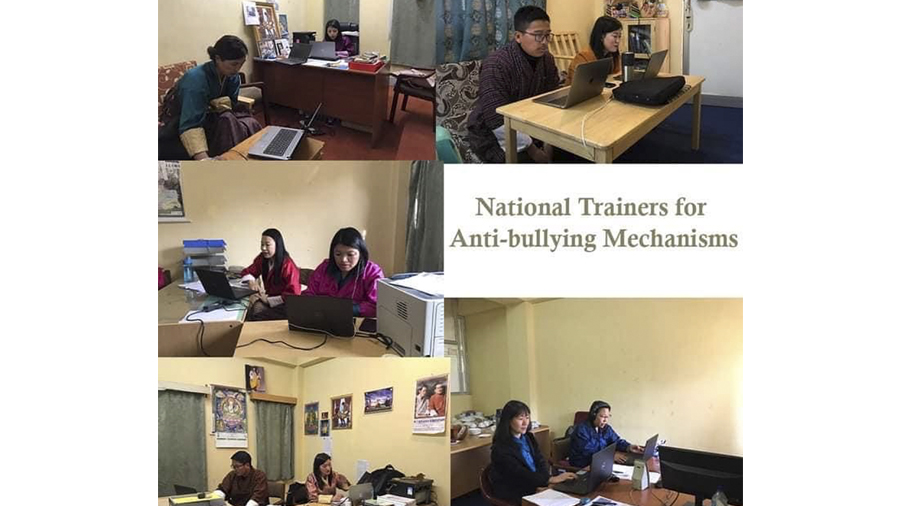
The Bhutan Global School-based Student Health Survey shows that 36% of Bhutanese college students were bullied at some point in their lives. While bullying can be of various nature like cyber bullying, physical abuse, and sexual abuse, the effects of bullying may continue into adulthood. To help schools address bullying, a two-day virtual orientation for over 500 schools was held this week.
The virtual orientation will help schools institute mechanisms to prevent bullying and offer responsive services to those affected by it.
The orientation with 535 schools across the country saw over a thousand participants including principals, counsellors and psychosocial focal persons learn how to implement the Guidelines for Anti-Bullying Mechanisms in Education Institutions.
Last year in Thimphu, a study showed 3% of the students were subjected to cyber bullying. Another 12% were physically abused and 4% of the students were sexually abused according to the study.
Chimi Yangzom a counsellor with the Woochu Lower Secondary School in Paro says the rate at which bullying is prevailing among the youth today is very alarming and very concerning. “Bullying has a vast detrimental impact on children’s development. It impacts their self-esteem, it impacts their social skills, the way they perceive their world. So, it has become very important that we take action at the prevention level rather than at response level.”
Studies have shown that adults can help prevent bullying by talking to children about bullying, encouraging them to do what they love, modeling kindness and respect, and seeking help.
Deki Choden who also works as a counselor at Changangkha Middle Secondary School, in Thimphu said that until now most of the mechanisms that they tired were more on the response aspect and what happens after bullying but in the Guidelines for Anti-Bullying Mechanisms, they are focusing on how they are going to create and promote self-learning environment. “ And how connectedness is an aspect of developing a school climate, which then later focuses on response. If there are cases reported to school, how can the school focus on responding to that.”
The Guidelines for Anti-Bullying Mechanisms in Education Institutions is an initiative of the PEMA Secretariat.
The guideline aims to create a safe and harmonious learning environment and to bring about emotionally resilient youth and children in the country.
Following the orientation, the schools will come up with their own Standard Operating Procedures, after which, a routine evaluation will be carried out.
Tshering Deki
Edited by Sherub Dorji









